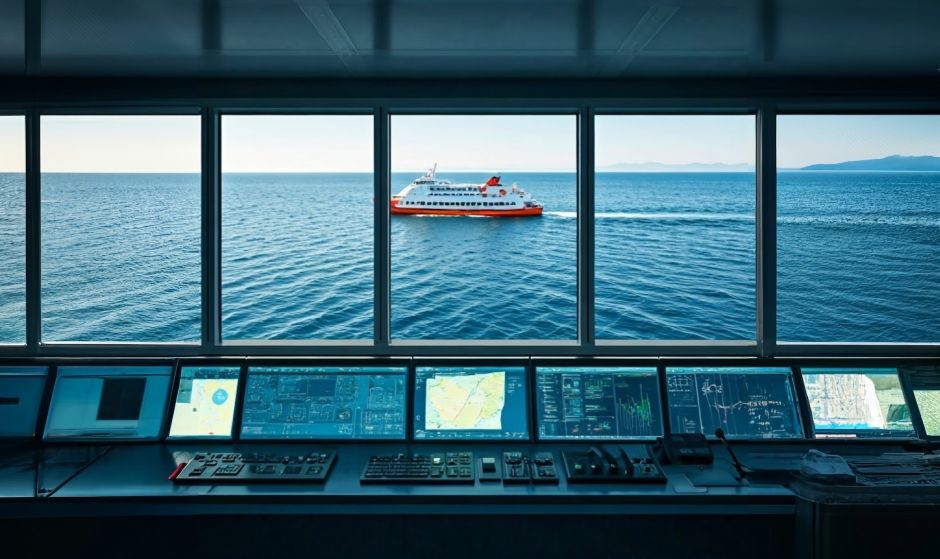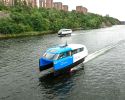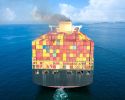ROC – A Tool for Survival

As competition for archipelago traffic intensifies, smaller shipping companies risk being outcompeted by larger, often foreign, players. However, results from a research project funded by the Swedish Transport Administration indicate that there is a solution. By collecting and analyzing data from their vessels, shipping companies can optimize operations, reduce costs, enhance safety, and increase their competitiveness.
Starting in December 2025, Torghatten AB, owned by the Norwegian conglomerate Torghatten AS, will manage the traffic from Strömstad to the Koster Islands. This means Koster Marin, which has operated the route since the 1980s, will lose its contract.
“It feels sad and a bit disheartening. I’m probably done here soon, but it’s worse for my children. I’ve steered them into this business, trained them, and now it’s collapsing,” said Koster Marin’s CEO, Håkan Eriksson, to Sjöfartstidningen when Västtrafik’s procurement decision was announced in May.
A few months later, it happened again. In October, Västtrafik announced that Torghatten, which employs 1,250 people in Norway, would also take over traffic in the southern Gothenburg archipelago starting in December 2027. It didn’t help that Styrsöbolaget, which has run the route since 1922, appealed the decision—Torghatten submitted the lowest bid.
The ROC Initiative
“One of the key things we’ve learned from this project is that smaller shipping companies are at risk of being outcompeted because they can’t maintain the same level of digitalization as larger operators. This is something that needs to be addressed,” says Jörgen Karlsson of ABB, one of the initiators of the Remote Operation Center (ROC) project for archipelago traffic.
Many associate the term ROC with a remote control center where operators on land steer or monitor autonomous ships using advanced systems. That is not the focus of this project (clarified in the second sentence of the report). Instead, an ROC in this context is an operational center where data from ships is collected and analyzed by an operator, who then provides the crew with clear recommendations and decision support to optimize operations and safety.
“We named the project ROC five years ago. Back then, remote control centers were called RCC, Remote Control Center. But suddenly, they were also called ROC,” explains Jörgen Karlsson.
The project stems from the challenges posed by the rapid development of maritime technology. New tech-driven systems require constant attention—lights, beeps, and alerts are omnipresent, often distracting crew members or causing them to miss critical alarms. This increases the risk of errors and unnecessary incidents. Additionally, crews can only utilize a fraction of the data generated by these systems, limiting its potential benefits.
“While large shipping companies have the resources to proactively address these issues, smaller archipelago operators often find themselves in an impossible situation. They can’t afford to hire someone for this purpose. So, how can we best help them? Could it be through an external organization that is always available to provide decision support from land?”
Testing the Concept
To test the concept, data was collected from three archipelago vessels: Ballerina, Färjerederiet (the government’s yellow ferries), and the aforementioned Koster Marin. The inventory of these vessels revealed that even older ships are equipped with numerous devices generating large amounts of data. In an ROC system, this information could be transformed into valuable insights and decision support for the crew, covering areas like energy efficiency, engine performance, and navigation.
“For example, you could receive recommendations on how to operate more fuel-efficiently. Archipelago traffic involves challenging routes, strict schedules, numerous stops, seasonal variations, delayed connecting buses, and more. There’s a lot to keep track of, but an ROC can keep you updated with digital information, like: ‘You can reduce your speed by 0.3 knots and save 15% on fuel or electricity while still arriving on time.’”
The technology needed to connect ships to an ROC is not expensive—essentially, all that’s required is an internet connection and a computer onboard to collect the data. Setting up the system takes only a day.
“We partnered with Oversea, which operates from Wallenius Marine. Oversea can be described as an ROC for transatlantic traffic. One of their operators handled monitoring and communication with our vessels.”
According to Rickard Lindkvist (ABB), who led the three-year project with Jörgen Karlsson, the idea is not only for onboard personnel to receive AI-generated information but also to have the ability to interact with an operator.
“For example, you might not just want to know to turn off an unnecessary alarm — you might also want to understand why. There’s also a need for someone with comprehensive expertise to assist if problems arise.”
A Promising Future
While the report does not provide detailed specifications for how an ROC will look or function, Lindkvist and Karlsson envision a subscription-based service for archipelago operators. When might it become available?
“Someone needs to see the business potential in this. Then, a few operators will likely need to adopt the service and testify to its benefits before others follow. That’s my gut feeling,” says Lindkvist.
The report makes it clear that an ROC for archipelago operators is a smart investment—not only for the operators but also from a socioeconomic perspective. For instance, the 340 vessels connected to the industry association Skärgårdsredarna could save SEK 12.5 million annually in fuel costs alone.
“That’s based on a conservative estimate of 4% savings, with a fuel cost of six kronor per liter. If operators are required to switch to alternative fuels in the future, the savings would be at least twice as high.”
When additional benefits like “emergency support,” “fatigue management,” “alerts for delayed departures,” “handling lost property,” and “managing incoming calls” are factored in, the total societal value of an ROC is estimated at SEK 110 million per year.
“These are just a few of the parameters we’ve considered to illustrate the potential value of an ROC. The actual benefits are likely even greater,” concludes Karlsson.
-
 Ny studie: Eldrivna pendelbåtar kan effektivisera Stockholms kollektivtrafik
Ny studie: Eldrivna pendelbåtar kan effektivisera Stockholms kollektivtrafik -
 Sjöfartens utsläpp ökar
Sjöfartens utsläpp ökar -
 Sociala relationer påverkar val av bränsle
Sociala relationer påverkar val av bränsle -
 Sjöfartens omställning kräver ”mjukare” påtryckningar
Sjöfartens omställning kräver ”mjukare” påtryckningar -
 Hon hade avtalad tid med Kapten ynkrygg
Hon hade avtalad tid med Kapten ynkrygg -
 Lighthouse omvärldsanalys 2025 – osäkerhet och tullar präglar sjöfarten
Lighthouse omvärldsanalys 2025 – osäkerhet och tullar präglar sjöfarten -
 Se seminariet Shipping in the Marine Environment
Se seminariet Shipping in the Marine Environment -
 Vad betyder egentligen de 90 procenten?
Vad betyder egentligen de 90 procenten? -
 Hålla där...
Hålla där... -
 Ny rapport: Klimatförändringarna ett hot mot de flesta större hamnar i världen
Ny rapport: Klimatförändringarna ett hot mot de flesta större hamnar i världen

